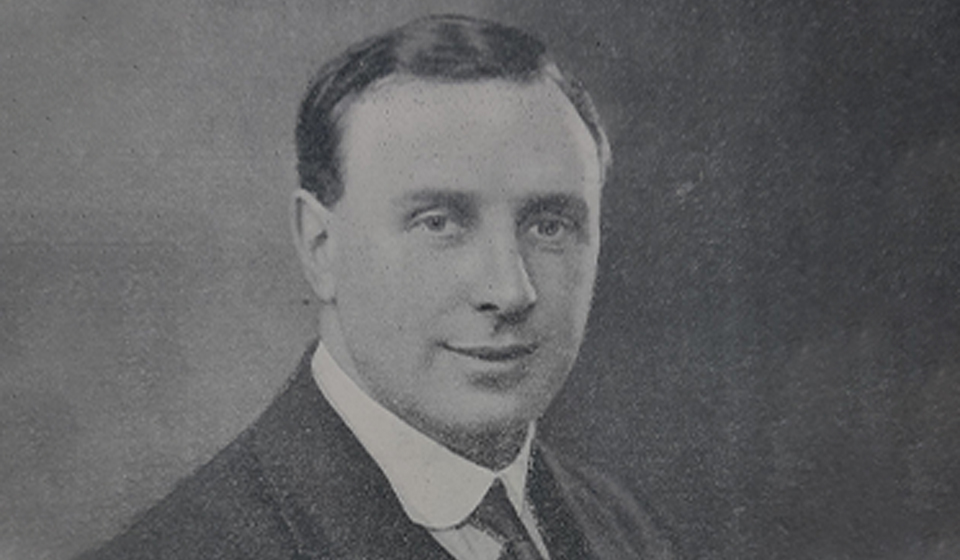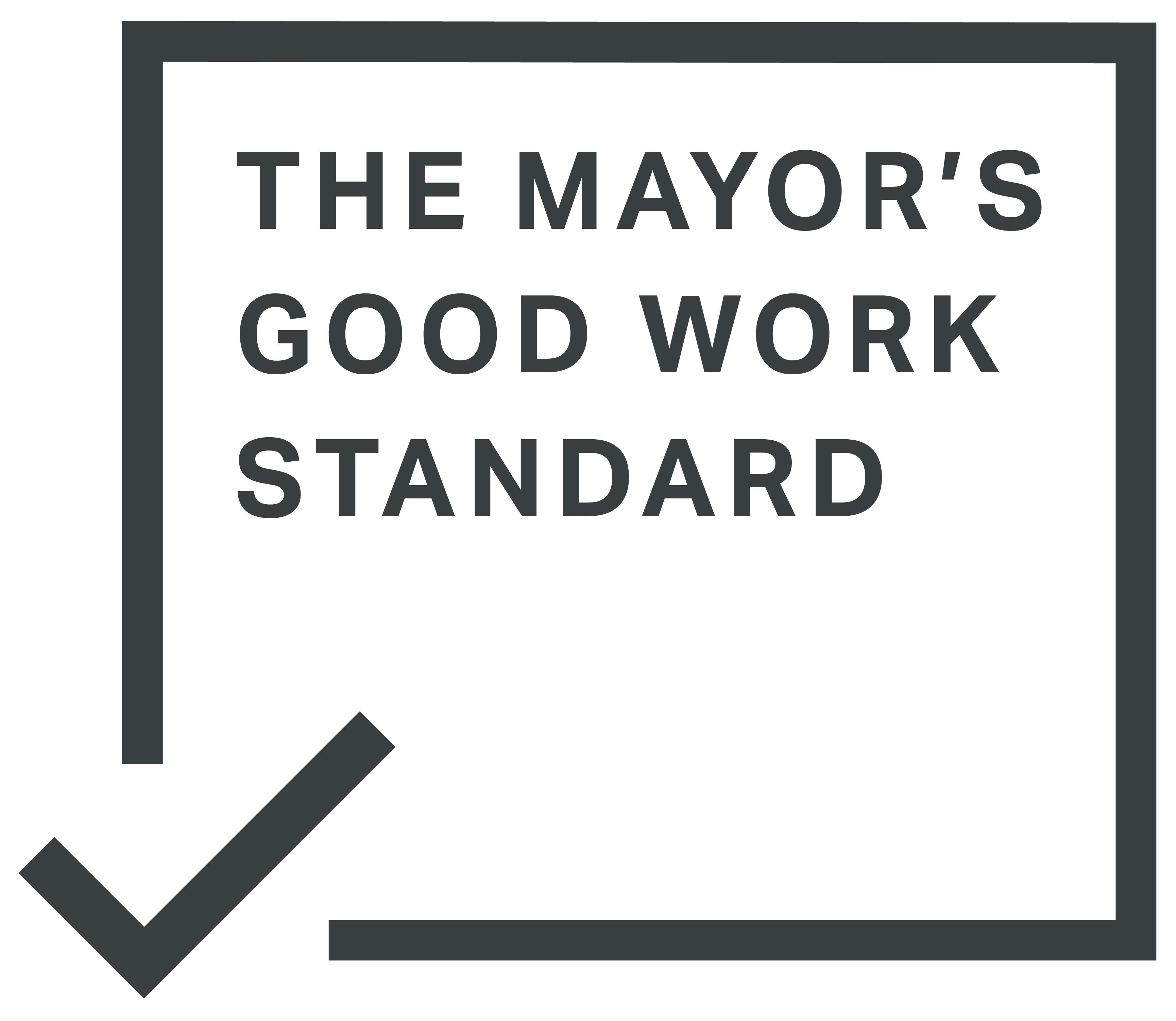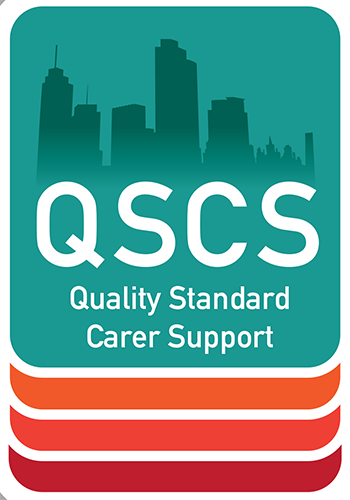“This was [Harry Lowery’s] first time to the Soviet Union and it was pure joy to watch the buoyant enthusiasm with which he added Moscow, Leningrad and Tashkent to his bag. On one occasion, soon after our arrival, we were given some buns with finely grated chocolate on the top. Lowery developed a taste for these in five minutes, and endeavoured to obtain them on every possible occasion without success. No waiter could possibly understand what he wanted, but Lowery’s description of buns covered with ‘petit caviar du Chocolat’ became the catch-phrase of the visit.”- Mrs G.R. Barrell, remembering Dr Harry Lowery after his passing. Article in the Times on 6th October 1967.
Dr Harry Lowery, M.Ed., D.Sc., Ph.D., F.Inst.P. (1896-1967), was appointed Principal of the South-West Essex Technical College and School of Art in October 1937, one year before the College was to open. He would continue to guide the College until his retirement at the end of the 1962-1963 academic year making him by far the longest-serving Principal at the College over a period of almost 26 years.
Harry Lowery was born 1896 in Hensignham, Cumberland to Henry and Annie Lowery. His primary education was at Montreal School, Cleator Moor. He then attended the County Secondary School, Whitehaven, before studying at universities in London, Leeds and Manchester (Who’s Who, 1952, p.1752).
Dr Lowery was a man of many interests and talents. His primary profession was that of a physicist which he took into his secondary profession as an educationalist, but his true passion was as a musician. Barrell (1967), writing in a Times article after Dr Lowery’s passing, highlights, “It was this marriage of science and art which fitted him to become an international authority on musical acoustics. His interest in education was abiding and he devoted much of his spare time to Trinity College of Music, of which he was a governor, and to the College of Preceptors, of which he was a vice-president.”
Dr Lowery’s instrument of choice was the organ. He was Organist to the Manchester College of Technology where he “designed and supervised the installation of a three-manual concert organ (Article, 1938)”. Lowery gave regular recitals on this instrument and was broadcast to the North Regional BBC as well as Empire transmissions. He was also involved in many organisations, being an honorary member of the Incorporated Society of Musicians, the American Guild of Organists, and the President of the London Society of Organists (Who’s Who, 1952, p.1752). He also went on to publish at least two books on music ‘The Background of Music’ and ‘A Guide to Musical Acoustics’.
As a physicist, Dr Lowery’s interests centred around “Applied Optics and Technical Acoustics, in connection with which he has published over sixty papers (Article, 1938)”. These were published in a variety of publications including the Proceedings of the Royal Society, Proceedings of the Physical Society, Philosophical Magazine, British Journal of Physiological Optics and the Journal of Scientific Instruments to name a few.
His research and designs found many theoretical and practical applications, one significant example being a road danger lamp of which thousands were produced an installed around the country (Article, 1938).
Dr Lowery’s career in education would see him work across many educational institutions. He started his career in secondary schools as Science Master over a period of six years before moving into the position of Assistant Lecturer in Physics at the University of Manchester in 1921-1925 under the direction of William Lawrence Bragg* (later Sir Lawrence Bragg). After a period at Bradford and Huddersfield Technical Colleges, Dr Lowery returned to University of Manchester in 1928 where he spent a further eight years as Head of Department of Pure and Applied Physics in the world-famous College of Technology (Who’s Who, 1952, p.1752).
His first role as Principal came at the North-Western Polytechnic in Kentish Town until he took up his position of Principal at the South-West Essex Technical College (now called Waltham Forest College) in 1937.
Lowery was a well-travelled man (as seen in his various publications), often visiting other countries to learn more about alternative education systems and music. In 1961 he led a two-week delegation to the USSR on behalf of the College of Preceptors to study the education system. He also published a small book on Some Aspects of Education in the U.S.A. after a trip to the country in the summer of 1948 while still Principal of the College.
Barrell (1967), who accompanied Dr Lowery on a 1961 two-week delegation to the USSR on behalf of the College of Preceptors, suggests that Harry Lowery will be remembered by those who knew him not as a great scientist or musician but as a “great man” who was “uncomplicated” and whose outstanding quality was “humility”. This is backed up in a letter by Lauren B. Sykes (1968), Organist from Portland, Oregon, where he acknowledges the passing of Dr Harry Lowery, “Thank you for taking the time to so kindly inform us of the passing of Dr Lowery. Several years ago it was our good fortune to sit in his classes on acoustics at Trinity College. He struck me as being extremely well informed on his subject as well as being a kind and gentle person.”
Dr Harry Lowery, M.Ed., D.Sc., Ph.D., F.Inst.P. died in 1967 after a distinguished career across three major fields; physics, education and music, all of which were often combined in his teachings and research. He was cremated at Golders Green Crematorium (West Essex Gazette) with a Memoriam held at The Church of the Holy Sepulchre, Holborn Viaduct, London on Wednesday 29th November 1967, by The Reverend Canon R. Tydeman, M.A..
Barrell (1967) writes, “For those who knew [Harry Lowery] there remains a gap which is greater than can be filled by a single man”.
Footnote:
*Sir Lawrence Bragg (1890 – 1971) was an Australian-born British physicist and X-ray crystallographer. He was joint receiver (alongside his father) of the Nobel Prize in Physics in 1915 "For their services in the analysis of crystal structure by means of X-rays". Sir Lawrence was knighted in 1941 and as of 2021 he is the youngest ever Nobel laureate in Physics (25 years of age). - Wikipedia (Accessed 6th January 2023).
List of publications by Dr H Lowery (incomplete):
- A Guide to Musical Acoustics.
- Education and Training of Physicists – published in Nature, Vol. 150, p.568, 14 November 1942.
- Education of Workers in Applied Physics – published in Nature, Vol. 146, p.811, 21 December 1940.
- Freedom in Science – published in Nature, Vol. 151, p.205, 13 March 1943.
- Future of Technical Colleges – published in Nature, Vol. 152, p.218, 21 August 1943.
- Memorandum on Post-War Education and Training of Physicists – published by The Institute of Physics, May 1942.
- Modern Tendencies in Technical Education – published in Education Handbook (1943). Norwich, Jarrold & Sons, Ltd., Norwich. P.78.
- Some Aspects of Education in the U.S.A. (1948) - published by The Walthasmtow Press, Ltd, Walthamstow.
- Some Observations on Research.
- The Background of Music.
- The Education and Training of Physicists – published by The Institute of Physics, 13 May 1943. Dr H Lowery contributed to the Report as part of a committee appointed by the Board of the Institute of Physics.
- Ultra-Violet Dispersion of Air – published in the Philosophical Magazine, Ser, 7, vol. xxxiii. P.622, August 1942.
Article completion note:
There is much more to be written about Dr H Lowery’s story, including that of his considerable time spent as Principal of the South-West Essex Technical College and School of Art. For those interested in finding out more about his time at the College, I prompt you to explore some of the other articles written in the history section of this website until such time as this article is updated further.
Updates:
First published: 06/01/2023
Reference list:
Article (1938). Dr. Lowery, Unknown magazine origin, presumed produced within the College.
Bray, W.R., (1947). The Country Should be Grateful - The War-time History of the South-West Essex Technical College and School of Art. Walthamstow: The Walthamstow Press Ltd.
Barrell, Mrs G.R., (1967). Dr. H. Lowery, The Times, London, 6 October.
West Essex Gazette., (1967). Dr. Lowery Dies, West Essex Gazette, Essex, 6 October.
Who’s Who (1952). Who’s Who 1952 - An Annual Biographical Dictionary with Which is Incorporated “Men and Women of the Time”. Soho Square, London: Adam & Charles Black. P.1752.
Researched and written by Thomas Barden








